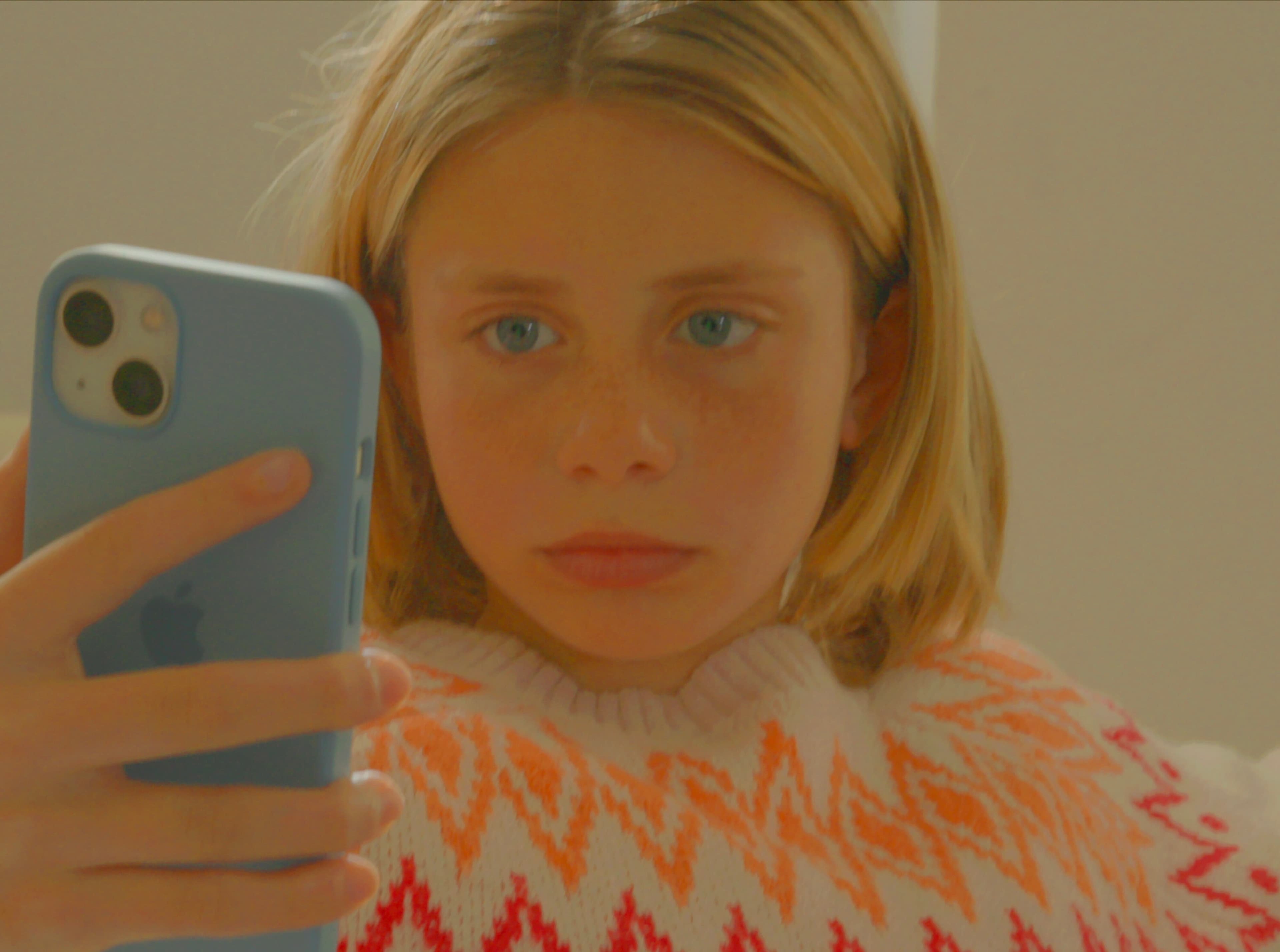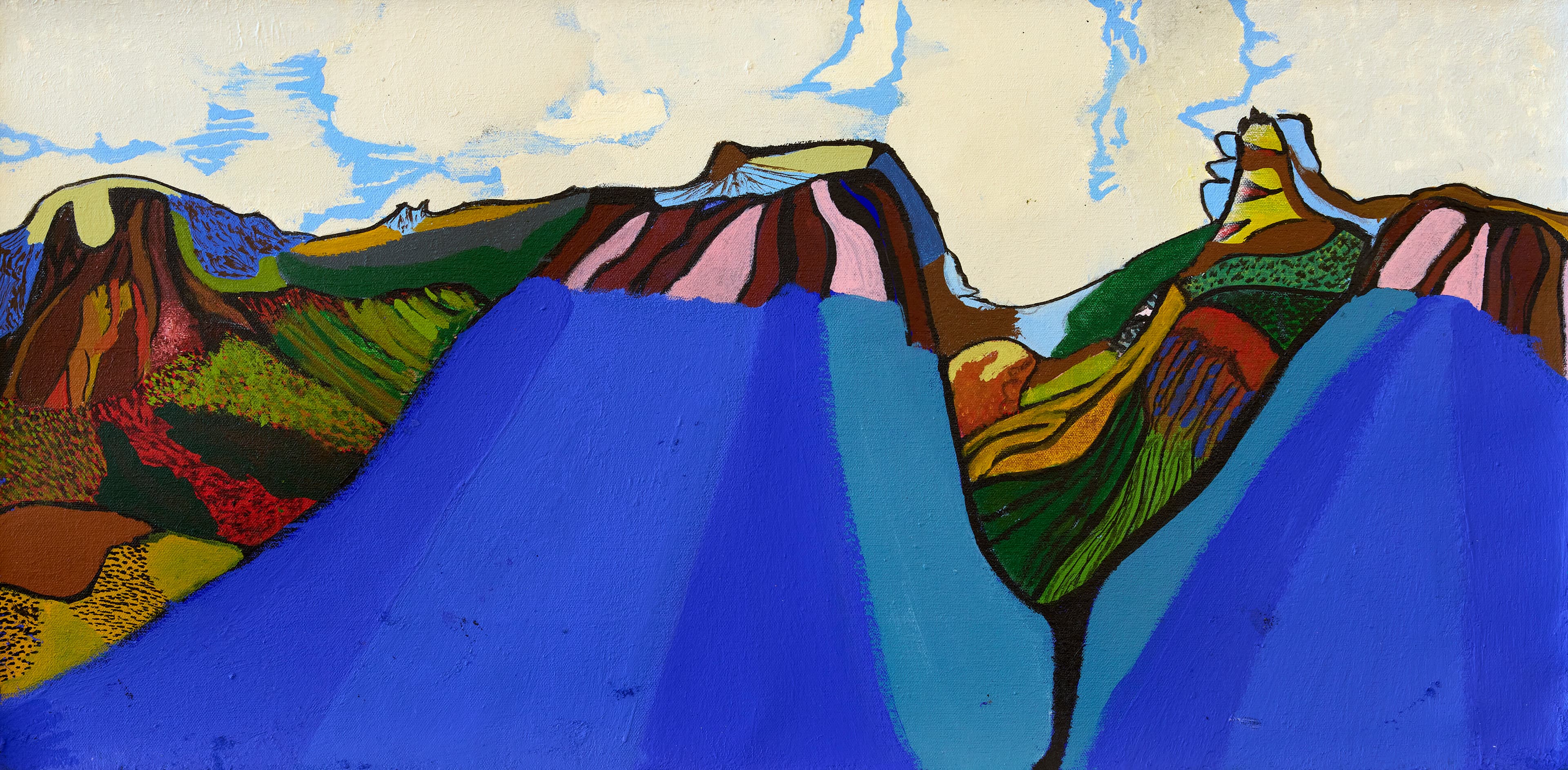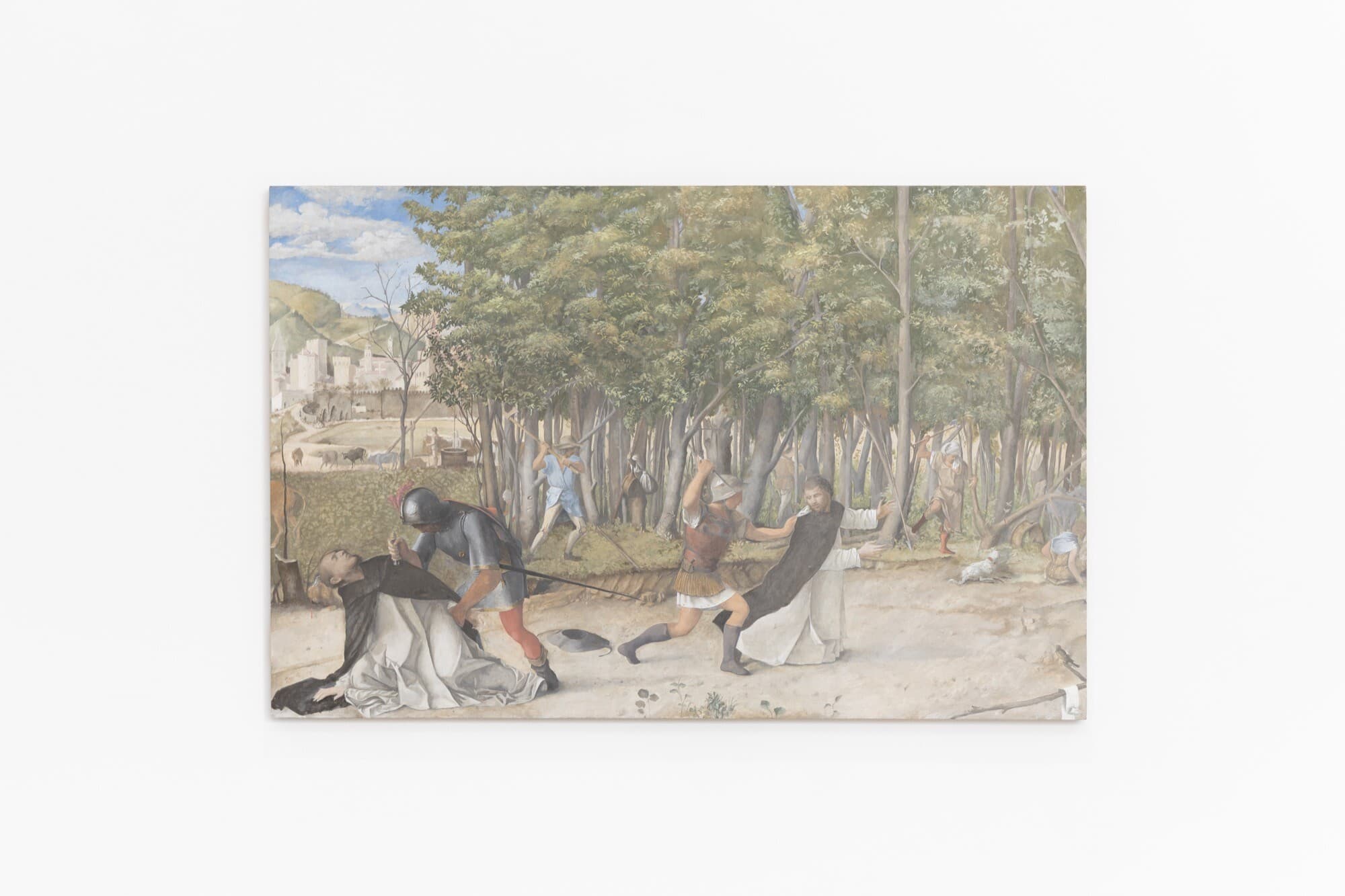Nathan Beard, Cicerone (detail), 2025, installation view, painted silicone, steel, foam, 3D printed polylactic acid, 3D printed resin, alleged Ayutthaya period bronze, Gucci ‘Siam Glitter’ platform sandals, Siam Shimmer Swarovski Elements, Light Siam AB Swarovski Elements, Resene ‘Siam’, Little Greene ‘Thai Sapphire’, plastic orchid, acrylic nails, image courtesy the artist and FUTURES, Narrm Melbourne © the artist. Photo: Christian Capurro
Nathan Beard: Cicerone; Sedula Cura
Giles Fielke
Any pit is an abyss, if properly labelled.
—Susan Sontag, The Volcano Lover
The Grand Tour officially ended last year with its final special titled “One for the Road.” Along with its predecessor for the BBC, Top Gear, the show is an index of the opening quarter of the twenty-first century. We might also include its original incarnation in 1977—a kind of televised catalogue for showcasing new cars and promoting auto-commuter culture to the British public—and it can be seen to index the entire span of neo-liberalism, from its soft-served implementation in the 1970s to its spectacular demise (i.e., from Thatcher and Reagan to Sunak and Trump). In a certain sense, the reduction of the Romantic concept of the grand tour—a secular pilgrimage for Aufklärung elites—to road-travel sold by bloated television car-salesman types honking on into the overly politically correct future is fitting, given the origins of the concept in the British aristocracy of the eighteenth century.
Nathan Beard’s current exhibition, Cicerone, features warped silicon hands reaching out into the dimly lit space of Gertrude Glasshouse. Mostly crowded onto a low plinth, phalanges are elongated, penetrating luxury objects like a pair of Gucci “Siam Glitter” platform sandals or embracing an “alleged Ayutthaya period bronze.” The exception is a comically long finger tied around a durian, all seemingly cast from life, and extending from a silicone hand implanted on the gallery’s eastern wall. The plinth on which Cicerone (2025)—dimensions variable—has been fussily arranged with some objects coloured with Resene ‘Siam’ paint, apparently “an exotic blend of green and brown.” These grotesqueries then form a limp and inattentive audience to the nearly twenty-two-minute single-channel video work, Bound (2025), that plays silently on a loop, projected onto a screen suspended from the ceiling.
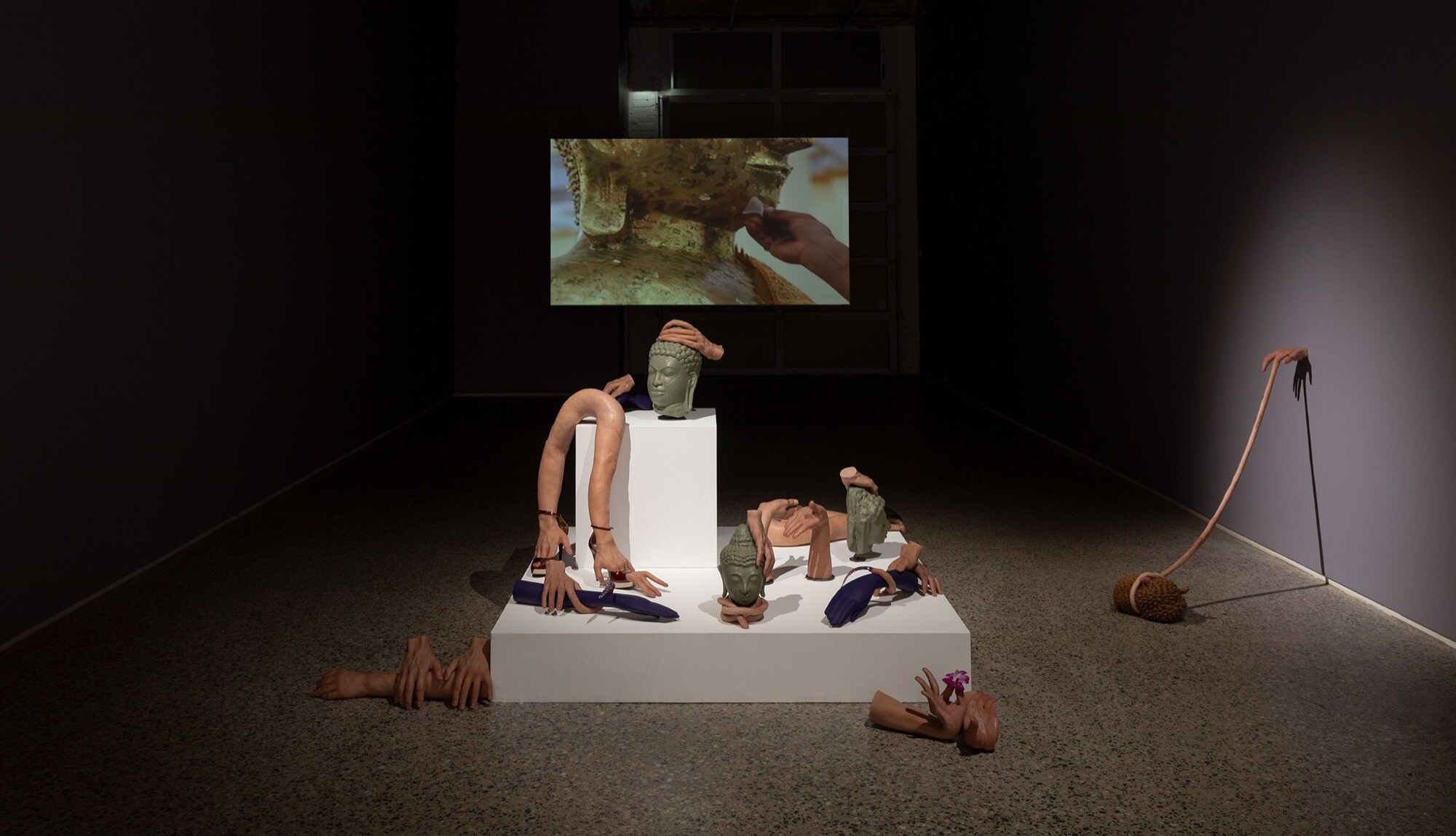
Nathan Beard, Cicerone, installation view, Gertrude Glasshouse, Naarm, Melbourne, 2025, image courtesy the artist and FUTURES, Narrm Melbourne © the artist. Photo: Christian Capurro
The stoic muteness of the video is the most compelling aspect of the installation. Emphasising hands, and oft-fetishised Thai motifs like the fon lep fingernail dance and boxing, I can identify montage sequences snatched from season three of The White Lotus. Other scenes I surmise as lifted from Thai television, cut with what looks like home movie footage shot on super 8 in the late 1970s or 1980s. Film theorist Colin Gardner describes a “stratigraphic silence” in cinema as akin to an affective saturation, meaning the temporal layers required to engage with a work become more pronounced by using on-screen silence as a device. It is in this way that the theatricalised commodification of the body becomes so much more intensive; the final cut ends with a close-up showing the fingernails of a deceased woman being painted assumedly in preparation for funeral rites.
Exhibition notes are required to frame what is happening here: “The cicerone is a learned guide who explains matters of antiquarian or artistic interest to foreign visitors.” Yet, who exactly is our guide here? It is hard to tell. On the one … um … hand, the crowded set of sculptures in the show simulate and contort casts of the artist’s own hands, lending a sense of the aestheticisation and fetish for labour that reaches its apotheosis in the artwork (“I made these”). While, on the other, the edited film cutting between transferred super 8 film footage and digital video suggests the device itself becomes the automated guide—the notes mention a “touristic gaze”—for the increasingly confused middle class subject trying fecklessly to reconnect with some assumed sense of authentic and unchallengeable pedigree or heritage (something I saw being described as like walking “hand-held into an identity” in another context this week). In essence, the techno-orientalism identifiable between sympathy and profound revulsion here might be seen to draw from the late Japanese roboticist Masahiro Mori’s uncanny valley thesis. Extending from Mori’s concept from 1970, contemporary feminist poet Seo-Young Chu has asked: What makes an ethnic stereotype uncanny? Her answer is found in the types of harm perpetuated and symbolised by the fundamental premise of The White Lotus: tourism sublimates (colonial) violence.
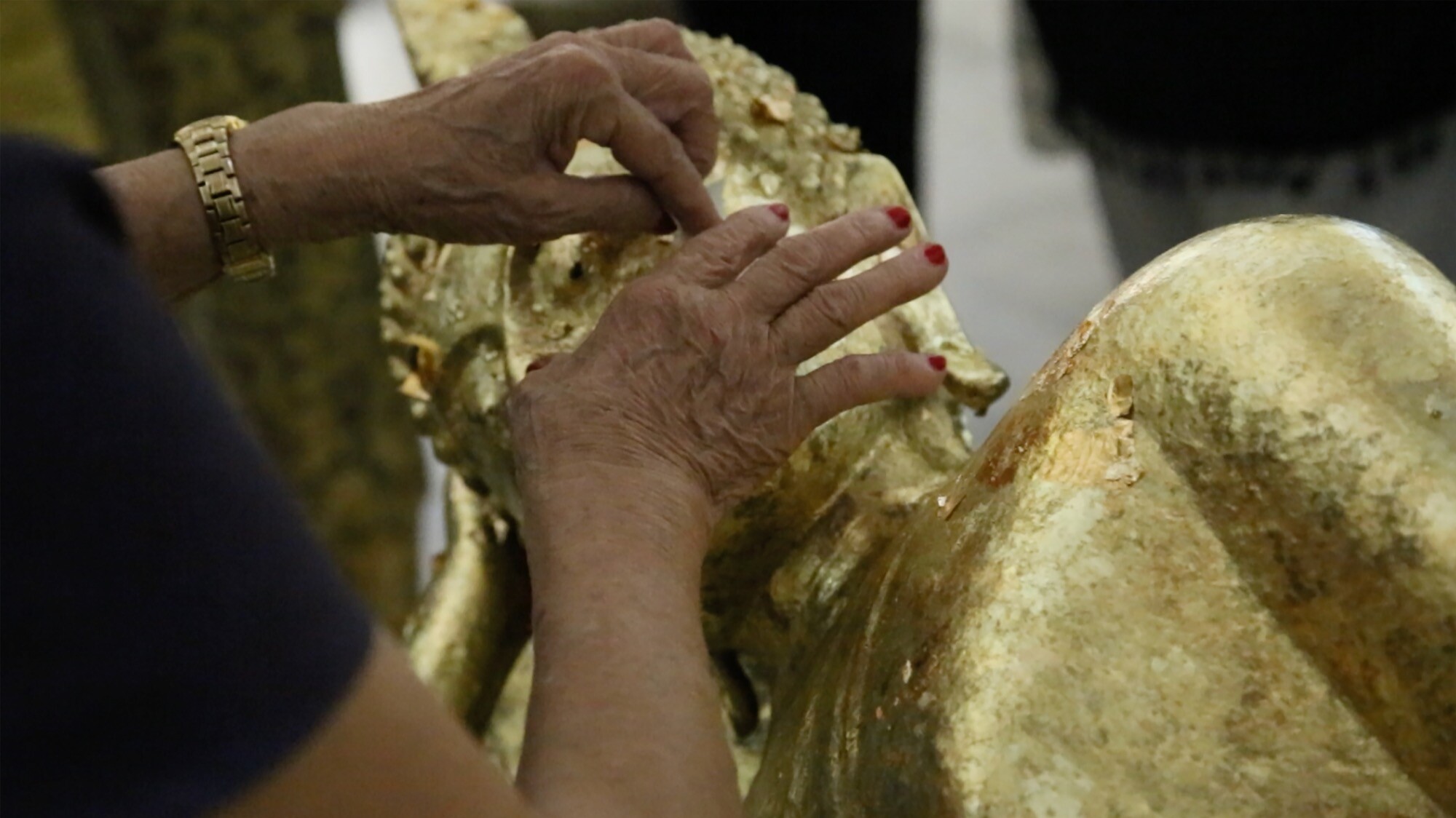
Nathan Beard, Bound (video still), 2025, single-channel HD video, colour, silent, Cicerone, Gertrude Glasshouse, Naarm Melbourne, 2025, image courtesy the artist and FUTURES, Narrm Melbourne © the artist.
The dialectical relationship between the alienating effects of the commodity and our sentimental identifications with outdated technologies like super 8 form the basis of Beard’s assemblage here. This caused me to wonder: why is it so easy to psychoanalyse the artwork, or an object’s status, but difficult to digress on other speculative aspects of the invented constellation presented here by Beard? I often think about this: what can’t we say about art today? This is where art is. Take a related example: for a time, visitors were not permitted to photograph works of art in museums. That attitude has since changed and so has policy; we are now encouraged (sans flash, although I can’t imagine that rule being enforced anywhere), potentially because rights to the image have been reversed. And maybe this returns us to my initial point, the end of neo-liberalism leaves us with aesthetic affectations like the way we tour galleries, i.e., as tourists. Another: we must not touch artwork on display (unless explicitly told we are to do so). We also can’t touch the digital. So, order to secure the work in its object status, it takes flight from presence. Looking at the material details of Cicerone suggests a further consequence. Here, Siam as Siamese or Thai identity is reduced to a colour, a type of gemstone, or even an effect (glitter). The prohibition or impossibility of touch in this context points to this other-worldly status of the artwork as identity, in spite of all the hands.
These are assumptions, speculations. I don’t know anything about Nathan Beard. Writing about his work feels decidedly out of my comfort zone, and I am not sure I can properly capture what it is about this work that is so compelling, but I’ve decided to follow my intuition. Very quickly searching online I can see we went to the same Sarah Lucas show in 2015, and that he is from Boorloo Perth, and the first photos he posted over a decade ago now are of his (now) late mother. His bio refers to his Australian-Thai heritage, and “Thainess” as a cultural signifier. In a certain sense it is the empty signifier “Australian” that allows me to access this work in a way that I cannot when encountering work by, say, Apichatpong Weerasethakul. (I am thinking here of his show, A Conversation with the Sun (Afterimage), opening next month at the MCA in Sydney.) It is therefore also liberating, my attempt to write on art from outside of preconceived lines, perhaps.

Nathan Beard, Cicerone (detail), 2025, installation view, painted silicone, steel, foam, 3D printed polylactic acid, 3D printed resin, alleged Ayutthaya period bronze, Gucci ‘Siam Glitter’ platform sandals, Siam Shimmer Swarovski Elements, Light Siam AB Swarovski Elements, Resene ‘Siam’, Little Greene ‘Thai Sapphire’, plastic orchid, acrylic nails, image courtesy the artist and FUTURES, Narrm Melbourne © the artist. Photo: Christian Capurro
However, there is another way into this problem. In the past little while there have been three, let’s call them, events, which have been positioned explicitly using the idea of the grand tour: lately Beard’s, Portuguese filmmaker Miguel Gomes’s award-winning feature Grand Tour (2024), and the new exhibition at the Shaw Gallery in the Baillieu Library at the University of Melbourne (opening on 28 July). Cicerone seems to echo or take direct inspiration from Gomes’s reading of W. Somerset Maugham. It’s in the notes. The English writer and playwright was born in a makeshift maternity ward in the British Embassy in Paris in 1874. He was later employed by the British Secret Service during the First World War.
Perhaps this passage from The Gentleman in the Parlour: A Record of a Journey from Rangoon to Haiphong, about a groom-to-be running away from his fiancée across British Burma and Indo-China, is what ties Beard’s work to Gomes’s film:
Bangkok. I put my impressions on the table, as a gardener puts the varied flowers he has cut in a great heap, leaving them for you to arrange, and I ask myself what sort of pattern I can make out of them. For my impressions are like a long frieze, a vague tapestry, and my business is to find in it an elegant and at the same time moving decoration. But the materials that are given me are dust and heat and noise and whiteness and more dust.
—W Somerset Maugham, The Gentleman in the Parlour (1930)
The table becomes the best depot for what I have earlier called the assemblage, and this echo might be most generously put as Beard’s homage to a grand tourist. Gomes appears to have adapted only a two-page script from the Maugham novel, in any case. And whereas the acclaimed filmmaker built an experimental work of cinema out of what he called “our archive of the journey” (essentially documentary footage shot on glorious super 16mm film between Myanmar and China over the period 2020–22: yes, a COVID project), Beard embodies Cicerone with the familial, and its uncomfortable proximity to inheritance. Perhaps most significantly, the colonialism of the Maugham reference is troubled by the simple fact that Siam (Thailand after 1939) remains the only state to have successfully resisted Western imperialism and occupation to date. Its present diplomatic structure remains complex, however. The ruling Chakri dynasty was founded in 1782, and the current head of state, Rama X, is often referred to as the wealthiest monarch in the world. He appears to have lived for significant periods of his life in Bavaria, however. Since 1978 he has issued seven heirs to three wives over nearly thirty years. Needless to say, royal succession is going to be harder to manage than most industrialist-capitalist arrangements (bar Musk’s, I suppose). Luckily for the crown, the country today is effectively run by the military. In any case, the guide, or cicerone (as paparazzi is to Cicero), is in some sense also my calling (I teach; I hope to delight, occasionally move). To speak eloquently about the world, about art, is our shared goal. Docere, delectare, et movere.
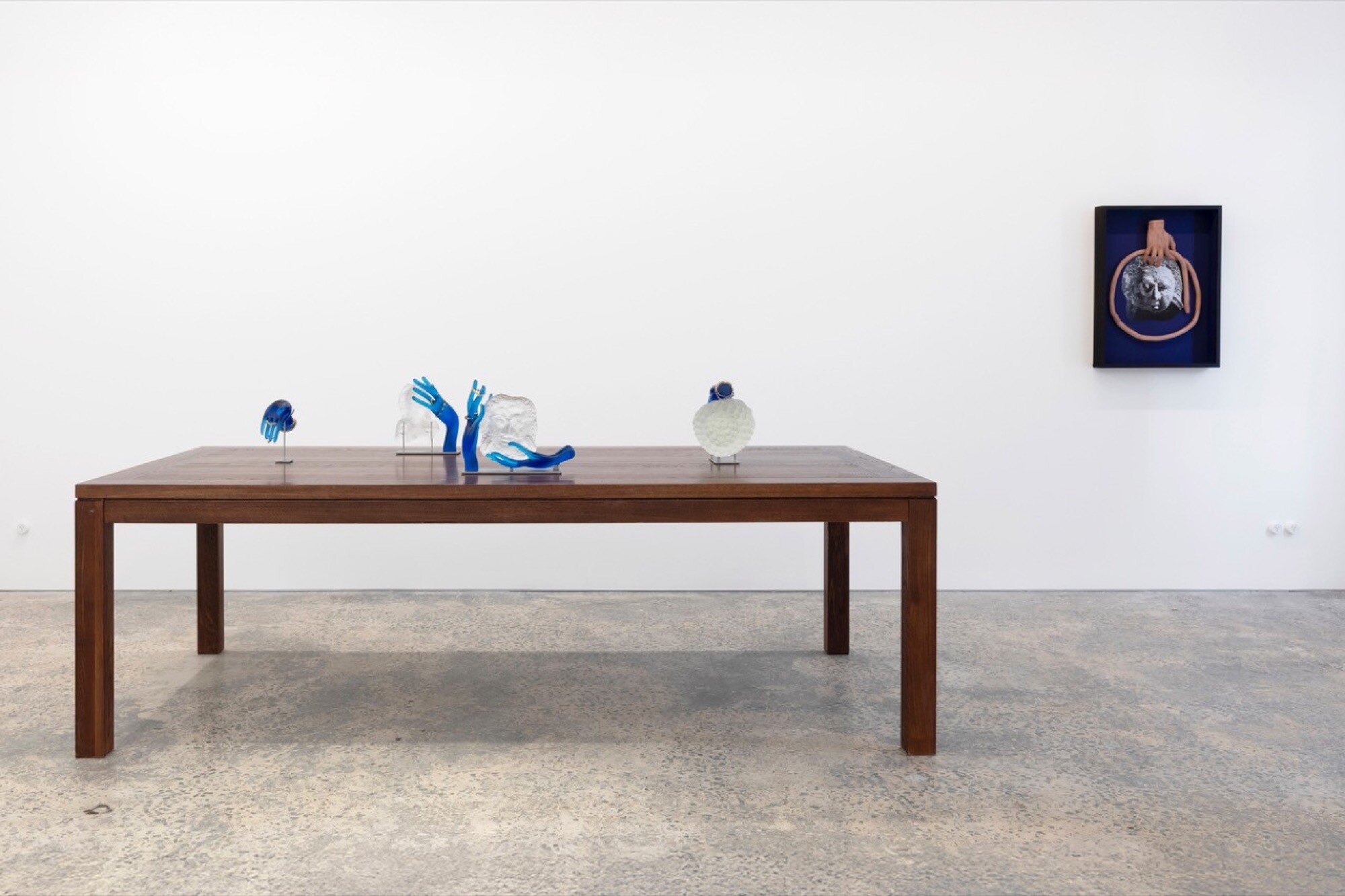
Nathan Beard, Sedula Cura, 2025, installation view. Photo: Christian Capurro courtesy the artist and FUTURES, Narrm Melbourne.
What would the cicerone say to their liege about Thailand today? A plethora of scandals seems to have erupted there in recent weeks. The Buddhist clergy has been rocked by an extortion scandal, which led to the uncovering of 80,000 pornographic images by the investigating police in the possession of a woman nicknamed Ms Golf by the press. Expected to practise celibacy, and in a country where ninety percent of the population are Buddhist, so far six senior monks have been oustered, and the king has been obliged to step in. For the government, the most recently elected Prime Minister, Paetongtarn Shinawatra, was suspended this month following a phone-call scandal that appeared to show her privately dealing with Cambodian strongman leader Hun Sen over an ongoing border conflict presided over by his own son, current Cambodian Prime Minister Hun Manet. The Catholic-educated billionaire and scion of the powerful Shinawatra family, whose own father (exiled, jailed, and then released last year by the King) and aunty (impeached, military coup) both served as Prime Ministers of Thailand. Their Pheu Thai Party has dominated Thai politics since 2000, while the now thirty-eight-year-old has amassed over US$400 million in watches and handbags alone, which she duly declared to the Thai National Anti-Corruption Commission. Needless to say, Thailand is probably the most widely inequitable state and a possibly perfect model for those hankering for a return to feudal society. To an ingénue, we might quote Schopenhauer on asceticism and desire, here. How tourism intersects with the political-economic and social reality of a sovereignty that maintains itself in spite of Western imperial interventions is more worthy of consideration, however.
Today also marks the opening of Beard’s latest show for FUTURES, Sedula Cura, where he has been represented since 2022. An earlier show is also related to Cicerone, at sweet pea (now AVA gallery) on the West Coast between December and January this year Beard connected his use of glass to his late mother, Ratana. Extending his archival interest in artistic fetishism and the appearance of Thai material cultures in Australian art contexts, the works draw upon the transmission of Thai Buddhist sculpture from the David Jones Gallery to the National Gallery of Australia. Whereas the former curator of Australian art at the NGV, Terence Lane OAM (1946–2024), whose collection of prints are now on display at the Baillieu Library’s Shaw Gallery as The Grand Tour, moves us in a different direction. While it appears to uncritically accept the important role of education as intensive and privileged, where it was supposedly universalised by public institutions, our present conditions reveal an impulse to re-package education for a techno-feudal and now constantly globally mobile consumer class. To instruct, delight, and to move. Read another way, this can instead be understood as a neat catchphrase for the savvy millennial exitpreneur, taking in the sights whilst day-trading through the Palestinian Genocide.
Giles Fielke is a contributing editor of Memo Review.
